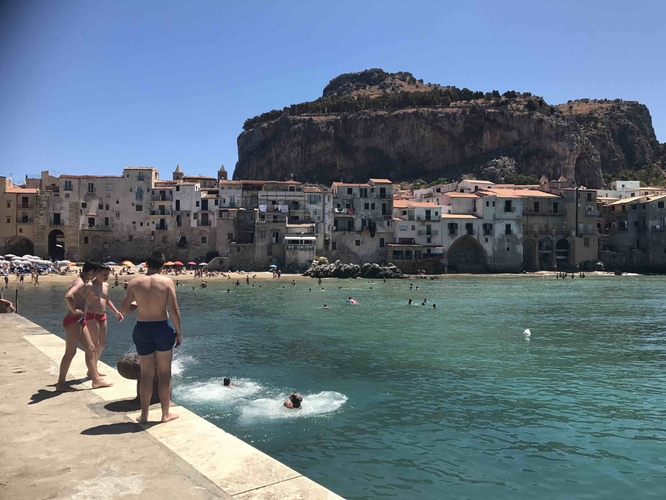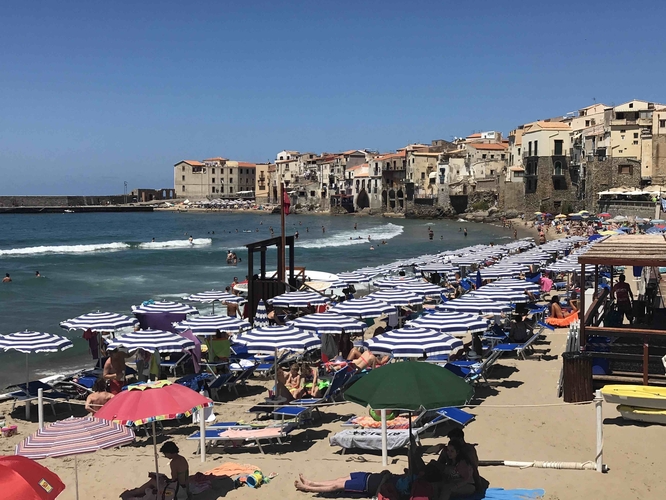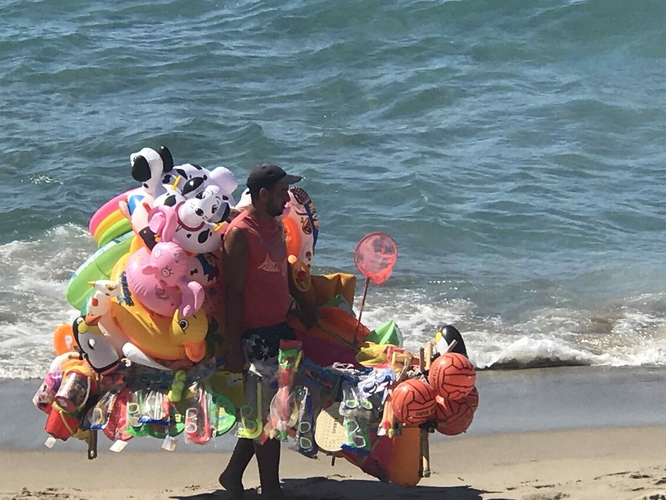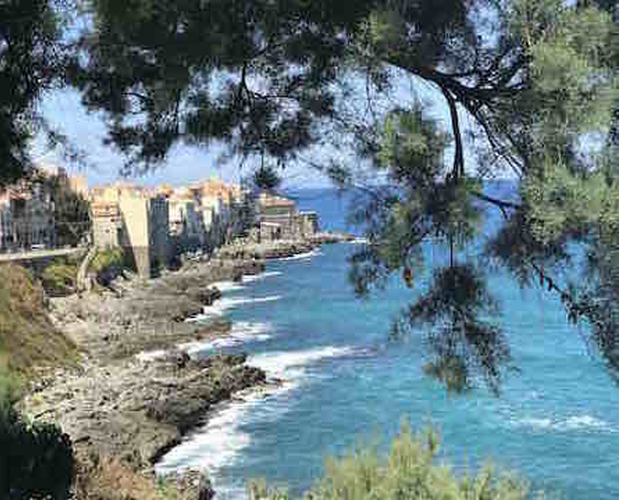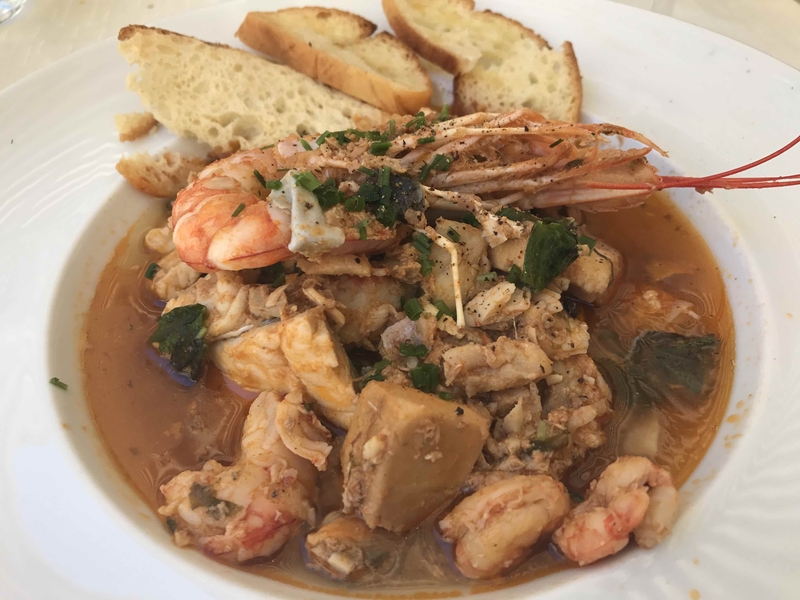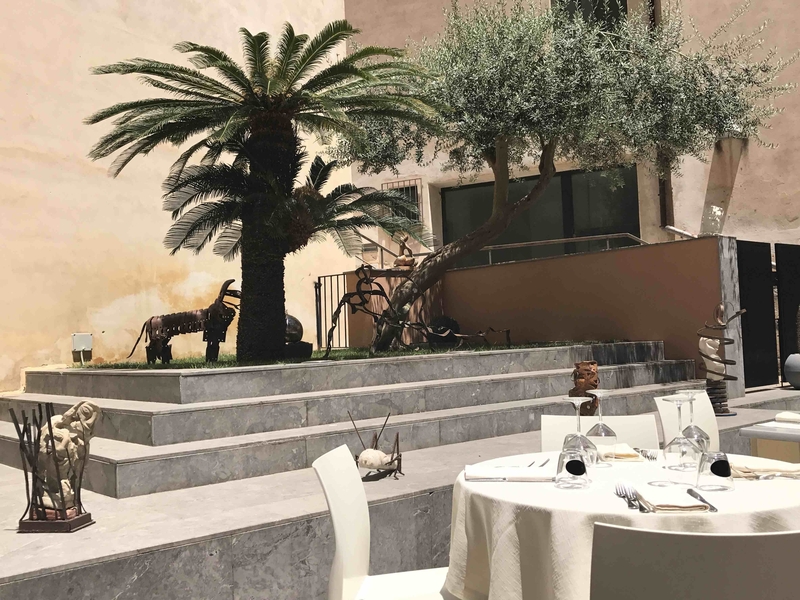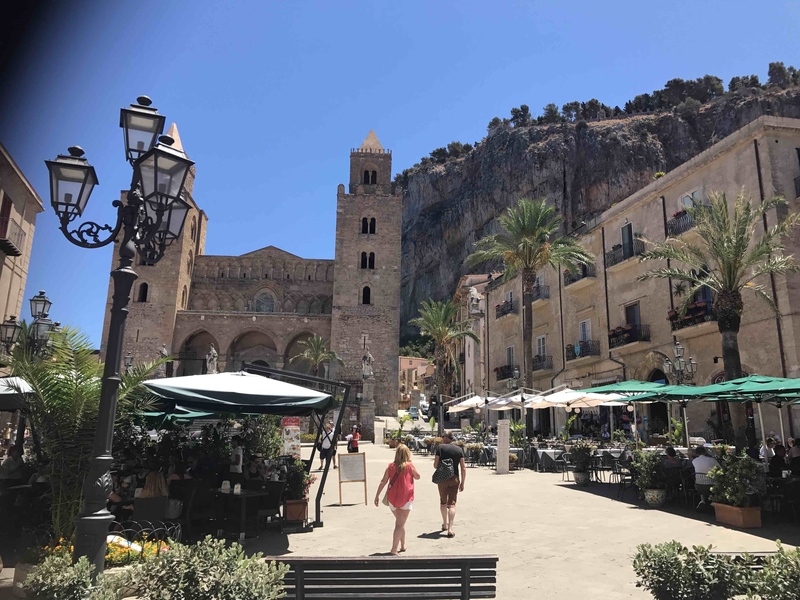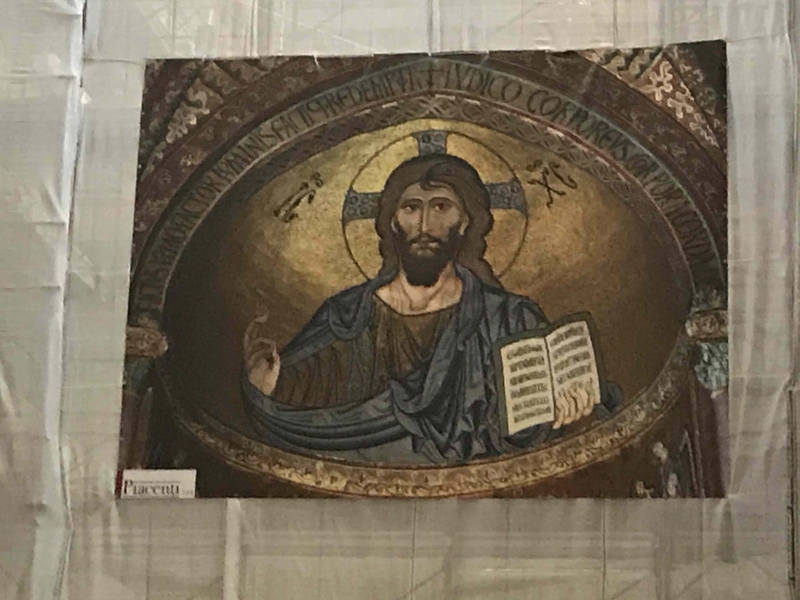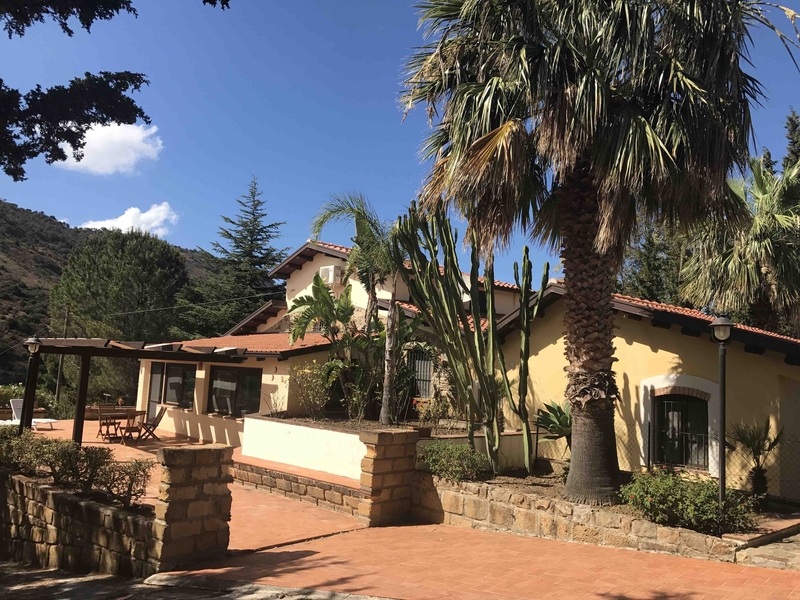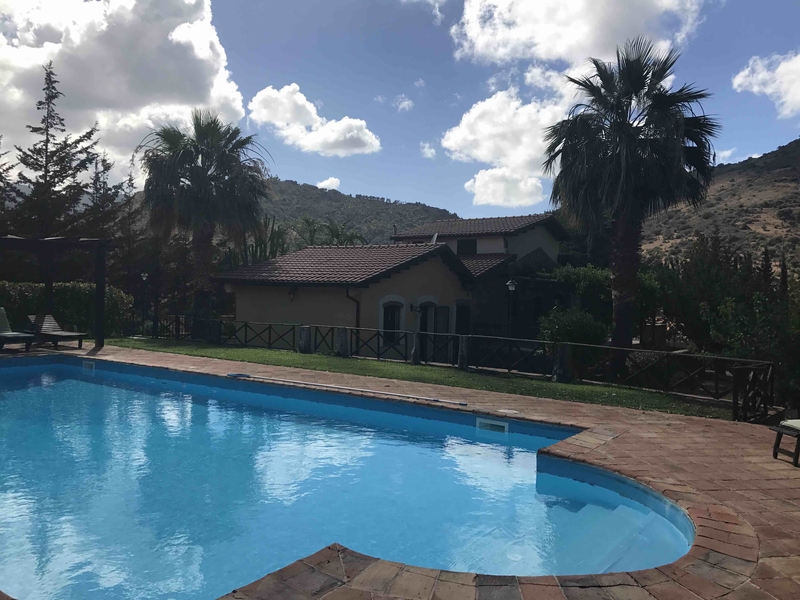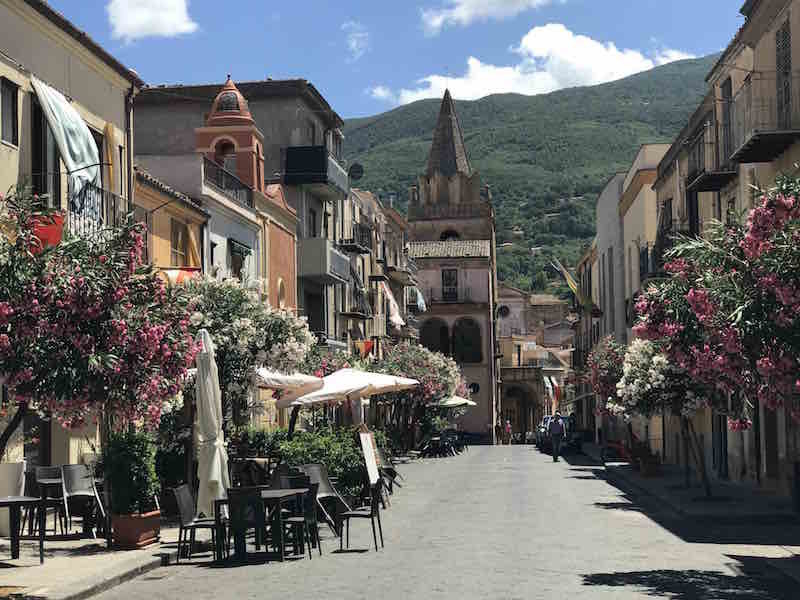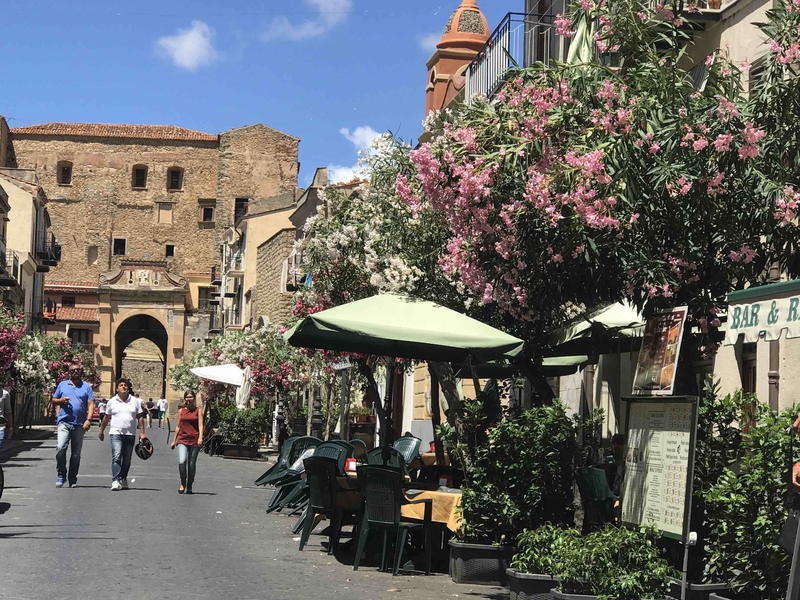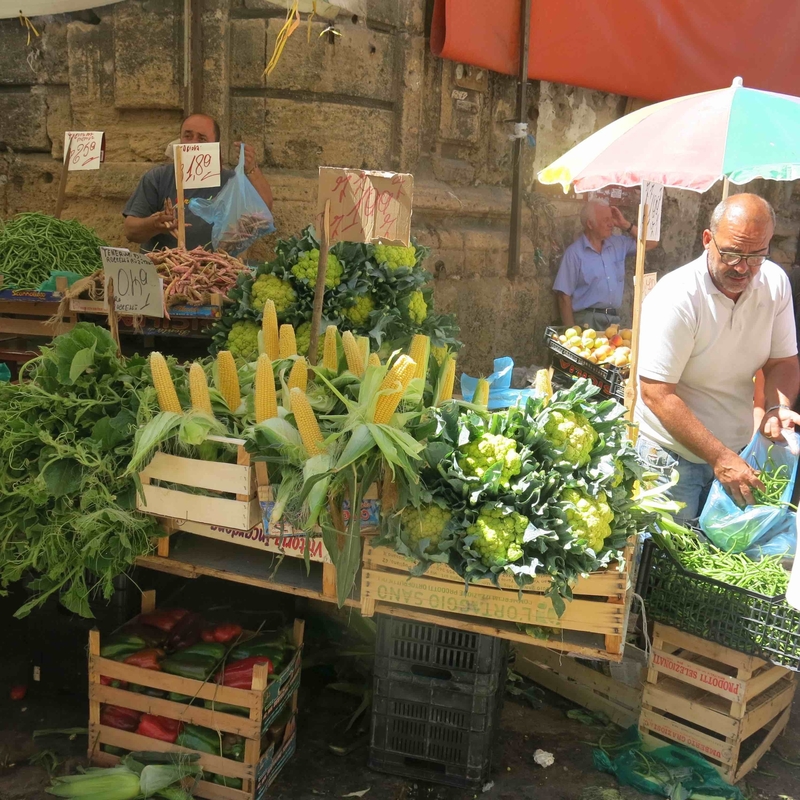Villa Charme lives up to its name for Neil Sowerby as he chills out near Cefalù
LOCATION, location, location. Some film scenes are so luminous you never forget them. Turn the corner onto Cefalù’s Porta Marina and it all comes flooding back almost 30 years on from Cinema Paradiso’s debut. Director Giuseppe Tornatore’s Oscar-winning homage to the power of moving pictures was shot in several places in the north of Sicily, but none etches on the mind like this stunning seaside resort.
Noontime and the old harbour under the towering limestone crag of La Rocca di Cefalù dazzles in the Mediterranean sun; in one of the movie’s most memorable moments (among many) it is where an outdoor screening of the 50s epic Ulysses starring Kirk Douglas is interrupted by a cloudburst, scattering the starstruck locals.
What we did try was, let’s say, challenging. Pani ca' Meusa, a sandwich of lard-fried spleen and ricotta has a softish consistency, but a similar mix of cow spleen, lung, and trachea grilled on skewers, called Stigghiola was uber-chewy and stank of mortailty.
After a morning wandering Cefalù’s tangle of cobbled streets we are in more danger of sunstroke, so retreat to eat at La Galleria, which is what it says on the label, a stylish art space/restaurant that spills over into a large courtyard. You lack the sea views of the string of restaurants along the Via Carlo Ortolano di Bordonara, but the food is more imaginative without sacrificing its Sicilian roots.
On this island never ignore the seafood; indeed Cefalù was once primarily a fishing village. The Galleria’s exquisite saffron-infused fish soup didn’t stint on the prawns, clams, swordfish and bass. We’d save afters for a mid-pm gelato, another Sicilian must, after a stroll along the more modern promenade to the west of the Old Town.
The glorious beach is understandably thronged, but we don’t fancy sand between our toes and there’s so much else to see in town, notably the magnificent Duomo (cathedral) set in a pretty square. Legend says it was given to the town by Sicily’s 12th century Norman king Roger II in gratitude for finding refuge on the beach from a violent storm. Some gift. Inside this Romanesque church-fortress survive some remarkably preserved Byzantine style mosaics, dominated by the fierce image of Christ Pantocrator in the central apse, his right hand held stretched out in benediction. Attached to the Duomo are two sides of a cloister, from which you can gaze up at the beetling cliff of La Rocca.
A path winds up to the top, stopping off at a megalithic Temple of Diana dating back to the fifth century, the round trip taking an hour. Go early and take plenty of water, your reward will be a stupendous overview of the town’s red rooftops, the thrilling coastline and the distant Aeolian Islands.
Our holiday base was inland, under 10 miles from Cefalù – the Villa Charme, part of the extensive Massimo Villas portfolio, primarily Sicilian properties but also extending to Tuscan, Puglia and Sardinia. Sleeping up to eight in rustic style, Charme’s big pluses were the splendid pool and the secluded hilltop setting (via a final 1 in 4 track for ‘careful drivers’).
To drive there was easy. Stocking up on cheese, salami and wine at the excellent Food Sicily Market on the Via Archimede, we took the hire car east along the winding SS13 coast road then turned inland towards the Madonie Mountains, after Etna the largest on the island and a Regional Park harbouring a string of remote traditional villages.
The plan was to take in a couple on a Sunday afternoon jaunt – perhaps Petralia Soprana and Polizzi Generosa (they even sound attractive) – but the Italian passion for automobiles intervened.
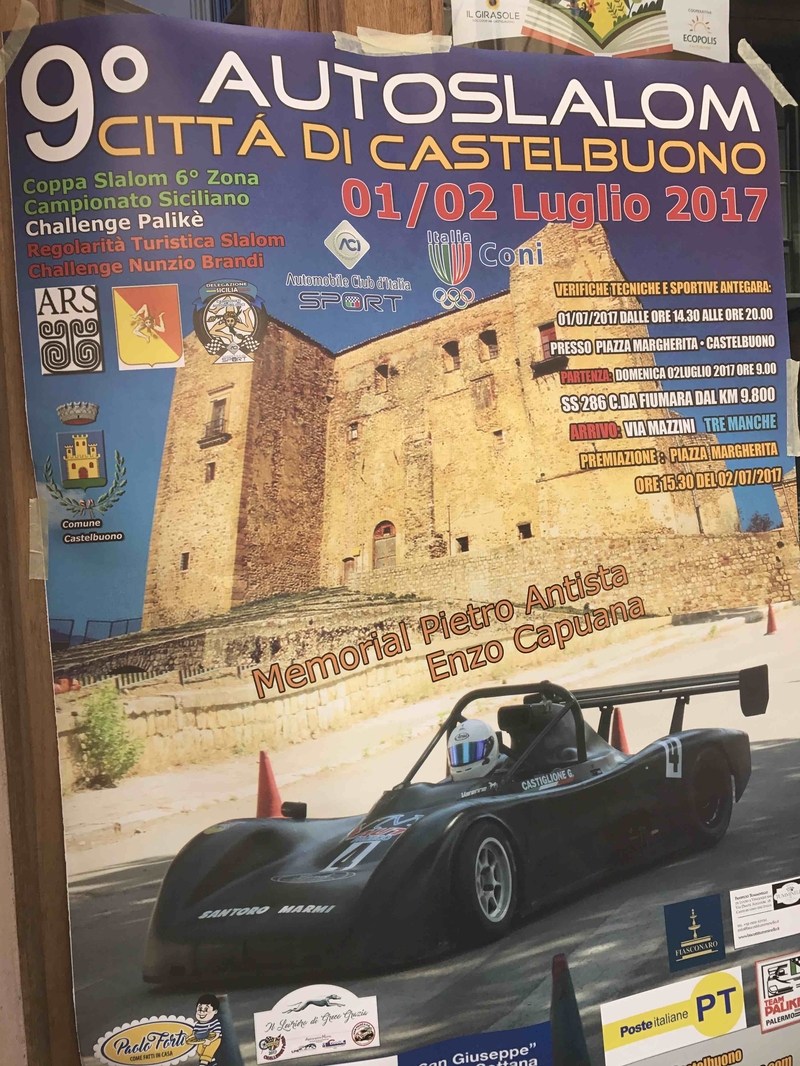
As we drove up to Castelbuono, the perched town that’s the gateway to Madonie, we ran into a gradually increasing cavalcade of cars, vintage, sports, racing models, heading towards us, then cone-guided chicanes in the road made us swerve. Well how were we to know this random July Sunday was set aside for Castelbuono’s ‘Grand Auto-Slam’ (we saw the posters later)? On the outskirts of town the polizia, yelling ‘fa’ presto’, lifted a barrier ushering us in; the cars behind us had been turned back.
So trapped in a handsome mountain town, what to do? Have a long lunch, of course, and we’d been recommended an absolute gem in the heart of the old town. Nangalarruni isn’t the easiest place to find; the Via della Confraternite is little more than an alley. Only the cluster of Michelin Bib Gourmands and Slow Food Movement stickers on the door give the game away.
Actually, game is what it does best along with mushrooms and wild greens, which feature on the four course tasting menu, accompanied by a silky Sicilian Frappato red called Ochipinti SP68. It goes perfectly with a trio of different fungi pies, vividly sauced pasta, rabbit cooked with pistachios and chocolate dessert, a sophisticated take on peasant food that belies the rustic surroundings.

The town’s food speciality is actually manna, as in ‘from heaven’. It is the sap of the European flowering ash, which is uniquely cultivated in plantations around the town. When tapped it is bitter but sweetens as it solidifies. It’s a mild laxative, expectorant and softens boils but what makes it the base for confectioneries is its kinship to honey and maple syrup.
Famous throughout Italy for its pannetone, Fiasconaro in the central Piazza Margherita, makes manna into a slightly musky ice cream. We stuck to beer to toast the Auto-Slalom victors when they arrived for the jolly prize-giving outside the town hall. By this time we had explored the old town thoroughly, recognising another Cinema Paradiso location. The rather grand 14th century Castello dei Ventimiglia stood in as the school of the film’s eight-year-old hero Toto, the boy in love with films.
There are flowers everywhere and from the castle terrace and every alley magnificent views of the Madonie.
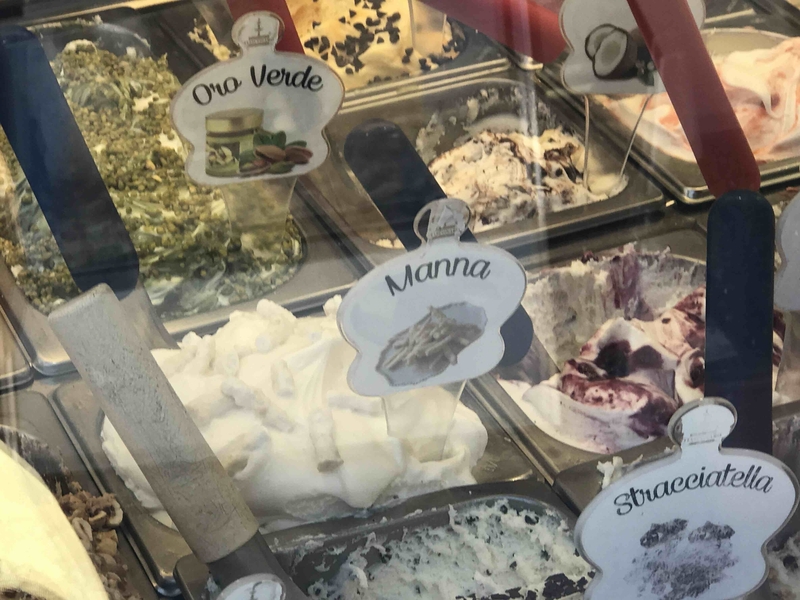
The temptation was to explore the backroads of the Regional Park then chill out by our pool, but Sicily’s capital, Palermo, just 45 miles from Cefalù, had an irresistible pull. We were warned not to drive in this frenetic city; we didn’t, we caught the train. It’s a gloriously scenic ride until you reach Bagheria, a bizarre mixture of Baroque villas, from its days as the the resort of the nobility, and arid concrete sprawl. Sticking to our theme, it is the hometown of Giuseppe Tornatore and inspiration for the village in Cinema Paradiso, but that was recreated in nearby Palazzo Adriano. Similarly the Godfather scenes set in this one-time Mafia stronghold were also filmed elsewhere.
Palermo lives up to its reputation of being magnificent but quite overwhelming. Our day trip barely scratched the surface. We hardly got to grips with its legendary street food, despite exploring the sprawling Piazza Ballarò Market, conveniently just a few minutes from the station.
What we did try was, let’s say, challenging. Pani ca' Meusa, a sandwich of lard-fried spleen and ricotta and caciocavallo cheeses at least has a softish consistency, but a similar mix of cow spleen, lung, and trachea grilled on skewers, called Stigghiola was uber-chewy and stank of mortailty. Still our trader sang opera and posed for selfies before charging us 2€ for our treat.

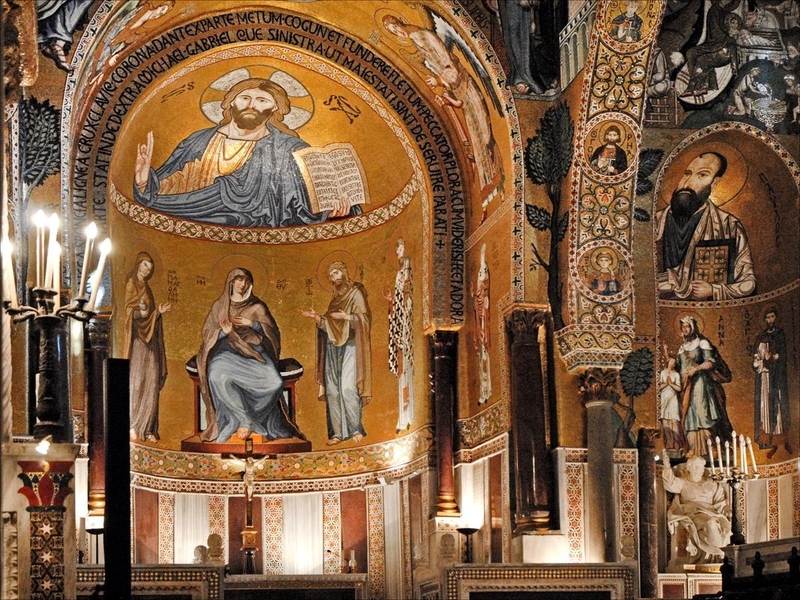
Afterwards we got hopelessly lost in the backstreets of the Capo quarter, which felt like one big Third World fleamarket. Not edgy in any way, but so at odds with, only a few blocks away, the monumental Cathedral and the manicured parkland around the Palazzo dei Normanni, centrepiece of which is the remarkable Cappella Paletina, Roger II’s private chapel decked from floor to ceiling in ornate Byzantine mosaics.
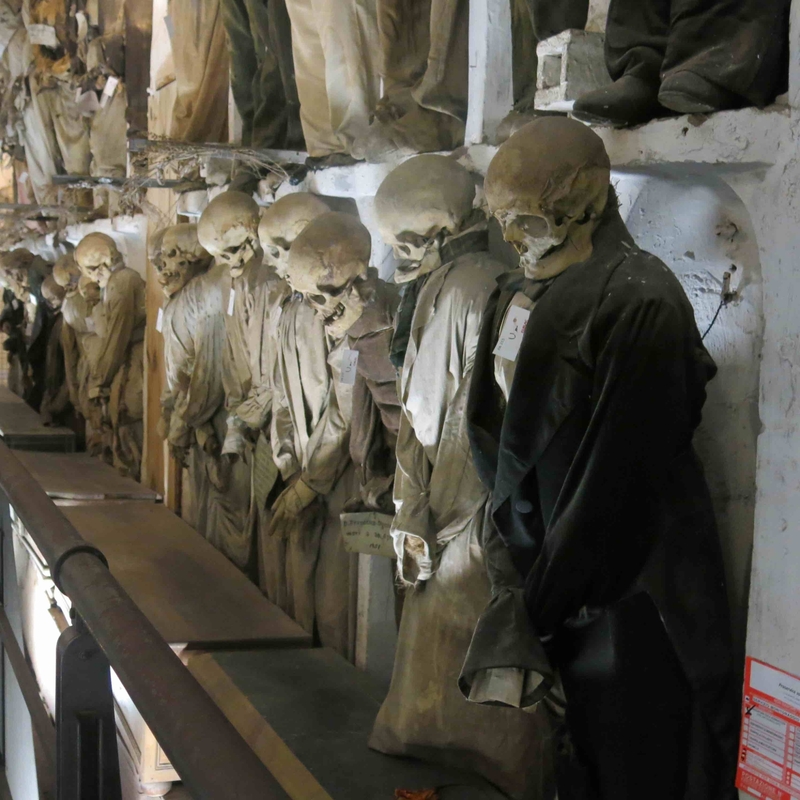
Mind-blowing, too, in a different way was our final stop-off in Palermo, a half hour uphill trudge from the Cathedral. Imagine eight thousand bodies preserved by various means, some for centuries, and placed in niches along subterranean passages. Separated by sex and social position, all shown by tags, the inhabitants range from close to disintegration to eerily near alive with their skin, eyes and hair tufts. It all makes the collection of the Catacombe dei Cappuccine (Catacombs of the Capuchin monks) a compelling off-the-beaten-track attraction.
A macabre Memento Mori that stays with you long after you have returned to the land of the living and its near 40 degree heat. Time for the Villa Charme pool and a chilled glass of Grillo.
FACTFILE
Massimo Villas offer a huge range of holiday homes across Sicily and other parts of Italy. They still have availability in September and October 2017 – a a great time to visit when the weather is still sunny and warm, the rental prices and flight prices are more reasonable.
Neil Sowerby stayed at the Villa Charme – weekly rental price from €1,750 to €2,950 – a 15 minute drive from Cefalù.
To book ring +44 (0) 203 908 7590 or email enquiry@massimovillas.com. The Villa Charme feels delightfully quiet and remote but very accessible – under a mile from an exit of the E90 Autostrada. Nearest shops are in the village of Sant’Ambrogio.
He flew from Manchester to Catania with easyJet and booked car hire with Europcar.
En route from Catania he stayed on the slopes of Mount Etna in the wine estate ‘agriturismo’, Tenuta San MIchele, Via Zafferana 13, 95010 Santa Venerina. Their own Murgo wines were a splendid accompaniment to a four course dinner there. Recommended as an affordable haven and a base camp for tackling the mighty volcano.






